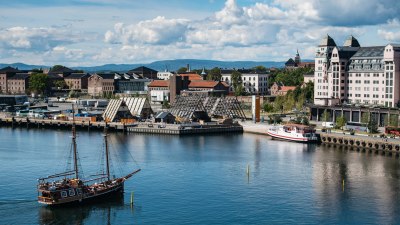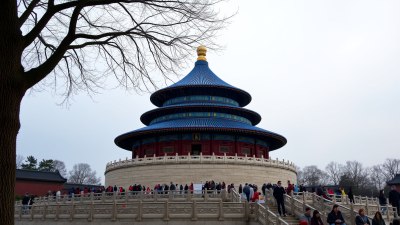Why Every Traveler Should Try a Pilgrimage Route at Least Once
Walking a historic path isn’t just about the destination - it’s about the transformation along the way.

Travel often focuses on seeing new places, but pilgrimage routes offer something deeper—an opportunity to connect with history, nature, and yourself. Unlike a typical vacation, a pilgrimage is about the journey itself, walking in the footsteps of countless travelers before you. Whether you’re religious, spiritual, or just looking for a unique travel experience, these routes offer a slower, more meaningful way to explore the world. From Europe’s famous Camino de Santiago to Japan’s mystical Kumano Kodo, walking a pilgrimage path is an experience every traveler should try at least once.
A Journey Through History
Many pilgrimage routes have been walked for centuries, making them living pieces of history. Paths like the Camino de Santiago in Spain date back to medieval times, while Japan’s Kumano Kodo trails have been used for over a thousand years. Walking these routes isn’t just about reaching the end—it’s about experiencing the same landscapes, villages, and traditions that millions before you have encountered. Each step connects you to a larger story, turning your journey into an exploration of the past.
A Break from the Modern World
In a time when travel often means rushing between tourist attractions, a pilgrimage forces you to slow down. Instead of packing a trip with itineraries and checklists, you walk, reflect, and absorb your surroundings. Without the distractions of fast-paced travel, you have time to notice the details—the sound of birds in the trees, the way the light shifts on ancient stone paths, and the kindness of strangers offering directions or encouragement. It’s a chance to disconnect from digital life and reconnect with something simpler.
Challenge and Reward
Pilgrimage routes aren’t always easy, but that’s part of what makes them so rewarding. Long-distance walking can be physically and mentally challenging, whether it’s navigating steep mountain trails or pushing through exhaustion on a long day. But overcoming those challenges makes the experience even more meaningful. Reaching a final destination—whether it’s a cathedral, temple, or mountaintop shrine—feels like an accomplishment earned through effort and perseverance. The personal growth that comes with the journey is often just as important as the destination itself.
The People You Meet Along the Way
Unlike typical solo travel, where interactions with strangers might be brief, a pilgrimage route often leads to deep, lasting connections. Walkers share trails, meals, and stories, forming friendships with people from all over the world. There’s a sense of camaraderie among those on the same path—whether you’re walking for spiritual reasons, personal reflection, or simply the love of the journey, you’ll find others who understand the experience. Conversations with fellow travelers, locals, and even monks or priests can add unexpected richness to your trip.
Connecting with Nature
Most pilgrimage routes take travelers through some of the world’s most beautiful landscapes. The Camino de Santiago winds through rolling countryside and charming Spanish villages. The Kumano Kodo trails pass through Japan’s sacred forests and misty mountains. The Shikoku 88 Temple Pilgrimage circles an entire island, offering ocean views, bamboo groves, and peaceful shrines along the way. Walking for miles each day allows you to truly immerse yourself in nature, rather than just seeing it from a car or train window.
Walking with Purpose
Unlike a typical vacation, where the focus is often on relaxation or sightseeing, a pilgrimage gives your journey a sense of purpose. Even if you’re not religious, there’s something deeply satisfying about walking a path with cultural and historical significance. Many travelers find that the slow, intentional pace allows them to reflect on their own lives, make big decisions, or simply appreciate the act of walking for walking’s sake. The journey itself becomes a meditation, helping you gain clarity, gratitude, and a new perspective on life.
Affordable and Accessible Travel
Pilgrimage routes are often one of the most budget-friendly ways to travel. Unlike fast-paced itineraries that require flights, expensive hotels, and costly attractions, walking a pilgrimage route is simple. Many trails have affordable guesthouses, monasteries, or even donation-based accommodations, making it an ideal choice for those looking to travel without spending a fortune. The focus is on the experience, not luxury, which makes it one of the most accessible ways to explore a country.
The Sense of Completion
One of the most rewarding aspects of a pilgrimage is reaching the end. Whether it’s the steps of Santiago de Compostela’s cathedral, a mountaintop temple, or a sacred spring, arriving at your final destination brings an overwhelming sense of achievement and reflection. Unlike other types of travel, where you might hop from one place to another without much thought, a pilgrimage leaves you with a feeling of fulfillment—like you’ve completed something truly meaningful.
Every Traveler Should Try It
Walking a pilgrimage route isn’t just a form of travel—it’s an experience that challenges, transforms, and inspires. Whether you’re seeking history, connection, nature, or personal growth, there’s something uniquely powerful about following a path walked by generations before you. It’s an adventure that slows you down, helps you reflect, and makes the journey as important as the destination.
So, will your next trip be more than just a vacation? Maybe it’s time to walk a path that has meaning.











